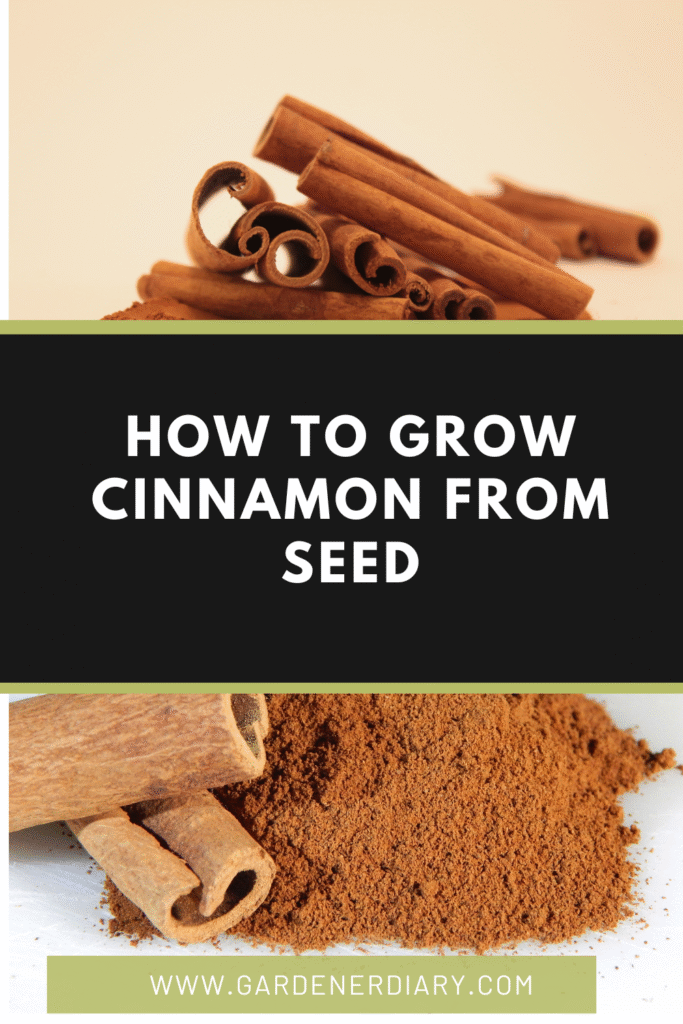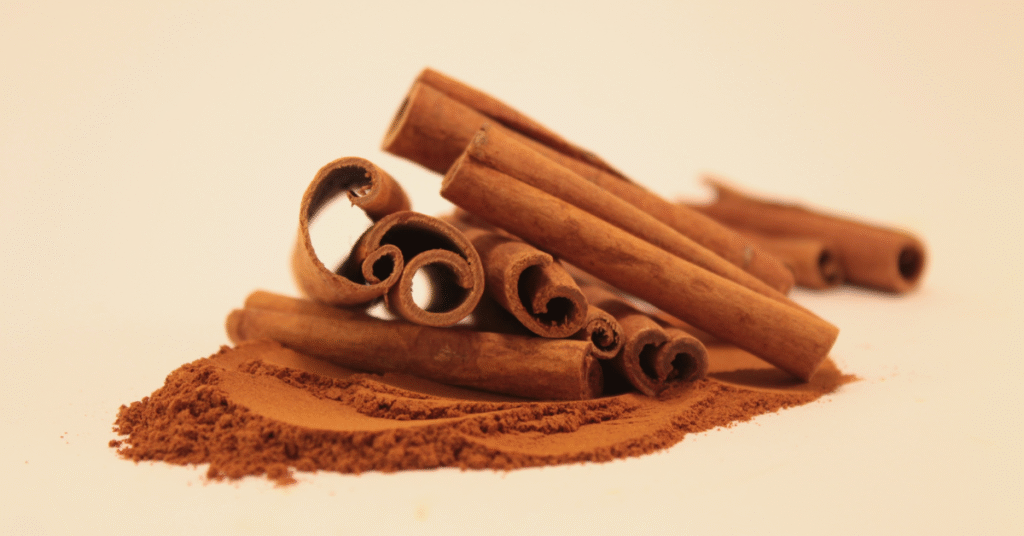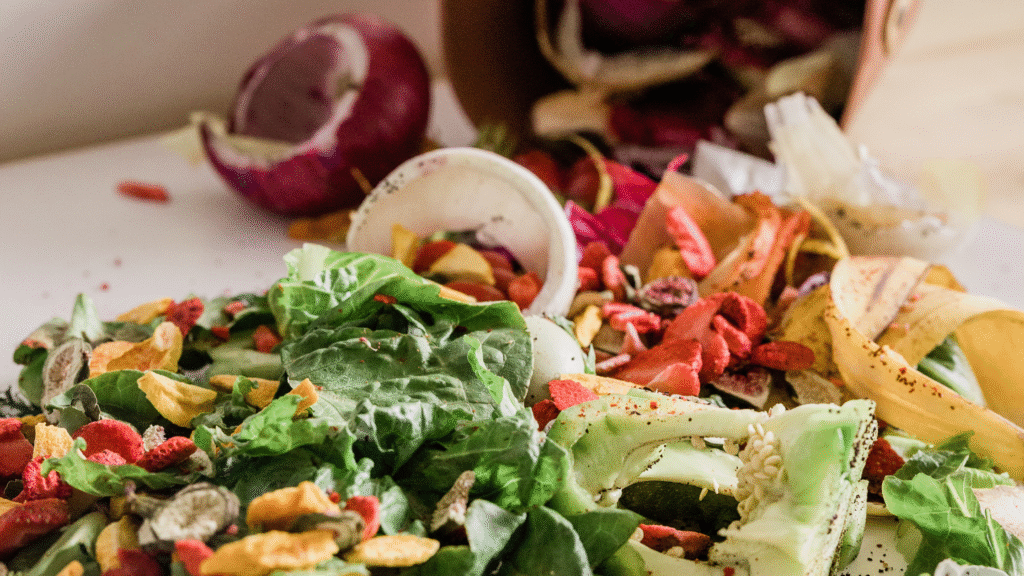Cinnamon is one of the most popular spices in the world. It comes from the bark of the cinnamon tree and has been used for centuries in cooking, medicine, and even cultural rituals. Growing cinnamon at home can be rewarding. While many people grow cinnamon from cuttings or sticks, you can also grow it from seed. In this guide, I will explain in detail how to grow cinnamon from seed, from preparing the seeds to caring for your young plant.
Quick Comparison: Growing Cinnamon from Seed vs Other Methods
| Method | Difficulty | Time to Grow | Best For |
|---|---|---|---|
| Seeds | Moderate | Slow | Gardeners with patience |
| Cuttings | Easy | Faster | Beginners |
| Sticks | Moderate | Slow | Experimental gardeners |
| Pots | Easy | Flexible | Indoor gardeners |
Understanding Cinnamon Seeds
- Cinnamon trees belong to the genus Cinnamomum.
- The seeds are small and round, with a hard outer shell.
- Fresh seeds have higher germination rates.
- Dried seeds often lose viability quickly.
A study showed that soaking cinnamon seeds in rabbit urine improved germination and viability ResearchGate.
Step 1: Collecting or Buying Fresh Cinnamon Seeds
- Always choose fresh seeds.
- Get seeds directly from a cinnamon fruit if possible.
- If buying, check the source and make sure they are less than a few weeks old.
- Avoid dried seeds that look cracked or shriveled.
Step 2: Preparing the Seeds
- Remove the pulp from fresh fruits.
- Wash the seeds in clean water.
- Soak seeds in lukewarm water for 24 hours.
- Some growers use organic soaking methods like rabbit urine to increase viability ResearchGate.
Step 3: Choosing the Right Soil
- Cinnamon seeds prefer well-drained, fertile soil.
- A mix of sandy loam with compost works well.
- Keep the soil slightly acidic with pH between 5.5 and 6.5.
- Add organic matter to increase soil fertility.
Step 4: Planting the Seeds
- Plant seeds about 1 cm deep in soil.
- Space them at least 5 cm apart.
- Cover lightly with soil.
- Water gently after planting.
Step 5: Providing Water and Light
- Keep the soil moist but not waterlogged.
- Place pots or seed trays in partial shade.
- Avoid direct, harsh sunlight during early growth.
- Cinnamon seedlings need consistent warmth.
Step 6: Germination Process
- Seeds usually germinate in 15–30 days.
- Some may take up to 60 days.
- Maintain a temperature of 25–30°C.
- Covering pots with plastic wrap can help retain humidity.
Step 7: Transplanting Seedlings
- When seedlings reach 8–10 cm tall, they are ready for transplanting.
- Move them to larger pots or directly to the ground.
- Space trees at least 2–3 meters apart if planting outdoors.
- Growing cinnamon outdoors gives the plant more space to thrive.
Step 8: Caring for Young Cinnamon Trees
- Water regularly but avoid standing water.
- Apply organic mulch around the base.
- Use natural fertilizers like compost or well-rotted manure.
- Protect young plants from strong winds.
- Learn more about cinnamon tree care.
For more care tips, see this detailed growing guide on The Spruce.
Step 9: Managing Growth in Pots
- If you prefer container gardening, you can grow cinnamon in pots.
- Use pots at least 18 inches deep.
- Keep them in sunny spots indoors or outdoors.
- Read more about growing cinnamon in pots.
Step 10: Preventing Pests and Diseases
- Cinnamon plants may attract fungal infections in humid conditions.
- Overwatering often causes root rot.
- Common pests include mites and aphids.
- Use neem oil or mild insecticidal soap.
- Keep the area clean to reduce fungal growth.
How Long Does It Take for Cinnamon to Grow?
- A cinnamon tree usually takes 2–3 years before it can be harvested.
- You need patience since bark harvesting happens only after the tree matures.
- Learn more about the time it takes to produce cinnamon.
Harvesting Cinnamon
- Harvest when the tree is 2–3 years old.
- Cut branches and peel off the bark.
- Dry the bark until it curls into sticks.
- Learn how to grow cinnamon sticks.
Benefits of Growing Cinnamon
- Fresh supply of cinnamon bark at home.
- Can be used for cooking and health purposes.
- Cinnamon tea has many health benefits NCBI.
- Reduces dependence on store-bought cinnamon.
- Adds a tropical look to your garden.
Read about the benefits of cinnamon tea.
Tips for Better Growth
- Always use fresh seeds.
- Keep soil warm and slightly acidic.
- Water regularly but avoid soggy conditions.
- Prune branches to encourage better bark growth.
- Consider growing cinnamon indoors if your climate is not tropical.
FAQs
How long does it take to grow cinnamon from seed?
Cinnamon grown from seed usually takes patience, as the germination process alone can take 15–60 days depending on seed freshness and growing conditions. After germination, the seedlings need at least 2–3 years to establish into a young tree before you can begin harvesting the bark. Full maturity for consistent harvests generally comes around 4–5 years. During this time, proper soil conditions, watering, and warm tropical or subtropical temperatures play an essential role in healthy growth.
What is the lifespan of a cinnamon tree?
A cinnamon tree has a relatively long lifespan compared to many other spice plants. When well cared for, it can live for 40–50 years, producing usable bark and leaves throughout most of its life. However, the most productive years for bark harvesting typically occur between 8–25 years of age. After that, the bark becomes harder, and yield quality may reduce, though the tree can still live for decades.
How to cultivate a cinnamon tree?
Cultivating a cinnamon tree starts with choosing the right growing environment. Cinnamon prefers tropical to subtropical climates with temperatures between 20–30°C and high humidity. Plant it in fertile, well-drained, slightly acidic soil enriched with organic compost. The tree thrives in partial shade but can adapt to full sun once established. Regular watering is key, but the soil should never be waterlogged to avoid root rot. Mulching around the base helps conserve moisture and suppress weeds. With pruning and organic feeding, the tree develops strong branches, making it easier to harvest bark later.
What climate is best for cinnamon?
Cinnamon grows best in warm, humid climates. Ideal regions are tropical or subtropical zones where the average temperature ranges from 20–32°C. The plant thrives in areas with regular rainfall, preferably around 1,500–2,500 mm annually. It also prefers environments that mimic its native regions like Sri Lanka, India, and Indonesia, where humidity is consistently high. While it tolerates some direct sun, young plants benefit from partial shade. Areas with long dry seasons or cold winters are unsuitable unless grown indoors or in controlled environments.
How do you propagate a cinnamon tree?
Cinnamon trees can be propagated through both seeds and cuttings. Propagation from seed requires fresh seeds, as they lose viability quickly. After cleaning and soaking, the seeds are sown in moist, fertile soil until germination occurs. Another common method is stem cuttings, where semi-hardwood cuttings are planted in a rooting medium. This method often produces quicker results than seeds. Some growers also use air layering, which encourages roots to form while the branch is still attached to the mother plant. Each method requires warmth, moisture, and careful monitoring for successful growth.
What part of the tree is harvested to make cinnamon?
Cinnamon comes from the inner bark of the tree. To harvest, branches are cut, and the outer bark is carefully scraped away to reveal the soft inner bark. This inner bark is then peeled, dried, and rolled into the familiar cinnamon sticks used in cooking. Younger shoots are preferred for harvesting, as their bark is thinner and easier to peel, producing higher-quality cinnamon. In addition to bark, cinnamon leaves are also sometimes harvested and distilled to make cinnamon oil.
Can cinnamon come from any tree?
No, cinnamon does not come from just any tree. True cinnamon comes from trees belonging to the Cinnamomum genus. The two most well-known types are Cinnamomum verum (often called Ceylon cinnamon) and Cinnamomum cassia (known as Cassia cinnamon). While other related species also produce bark with similar properties, only those in the Cinnamomum group provide the spice recognized globally as cinnamon. Ordinary trees outside this genus cannot produce authentic cinnamon bark.
Does cinnamon lower blood sugar?
Yes, research suggests that cinnamon may help lower blood sugar levels. Compounds in cinnamon can improve insulin sensitivity, which allows cells to absorb glucose more effectively. This may help reduce blood sugar spikes after meals. Studies have shown that regular consumption of cinnamon may support better blood sugar control in people with type 2 diabetes, though it should not replace prescribed medication. Instead, it can be used as a natural supplement alongside a healthy diet and lifestyle.
Which is better for diabetes, turmeric or cinnamon?
Both turmeric and cinnamon have benefits for people managing diabetes, but they work in different ways. Cinnamon helps improve insulin sensitivity and regulate blood sugar, making it useful for reducing post-meal spikes. Turmeric, on the other hand, is rich in curcumin, which helps reduce inflammation and oxidative stress that often worsen diabetes complications. For someone with diabetes, combining both in moderation may provide the best results. However, neither should replace medical treatment, and it’s best to consult a healthcare provider before making them part of a daily routine.
Can cinnamon reduce belly fat?
Cinnamon may support weight management, but it is not a miracle fat-burning solution. The spice can help regulate blood sugar and reduce cravings, which may indirectly help reduce fat accumulation, including around the belly. Some studies also suggest cinnamon can improve metabolism and reduce inflammation, which can aid weight loss when paired with proper diet and exercise. However, it should be seen as a supportive ingredient, not a standalone solution for belly fat reduction.
Is cinnamon good for the liver and kidneys?
Cinnamon can benefit the liver and kidneys when consumed in moderation, as it contains antioxidants that help protect these organs from oxidative damage. Some studies suggest that cinnamon supports healthy liver enzymes and may improve kidney function by reducing inflammation and blood sugar levels. However, excessive intake—especially of Cassia cinnamon, which contains high levels of coumarin—can harm the liver and kidneys over time. Ceylon cinnamon, with lower coumarin levels, is considered safer for long-term use. Moderation is key to reaping its health benefits without risk.
Tools:
Final Thoughts
Growing cinnamon from seed requires patience, care, and the right environment. Fresh seeds are essential, and germination may take time. With proper soil, light, and water, you can successfully grow a cinnamon tree. While it may take years before harvesting, the reward of having fresh, homegrown cinnamon makes the process worthwhile.
For alternative methods, you can explore growing cinnamon from cuttings, sticks, or even in pots. Each method has its benefits depending on your space and needs.
For more detailed agricultural information, visit Times of Agriculture or check out scientific studies on cinnamon growth.


